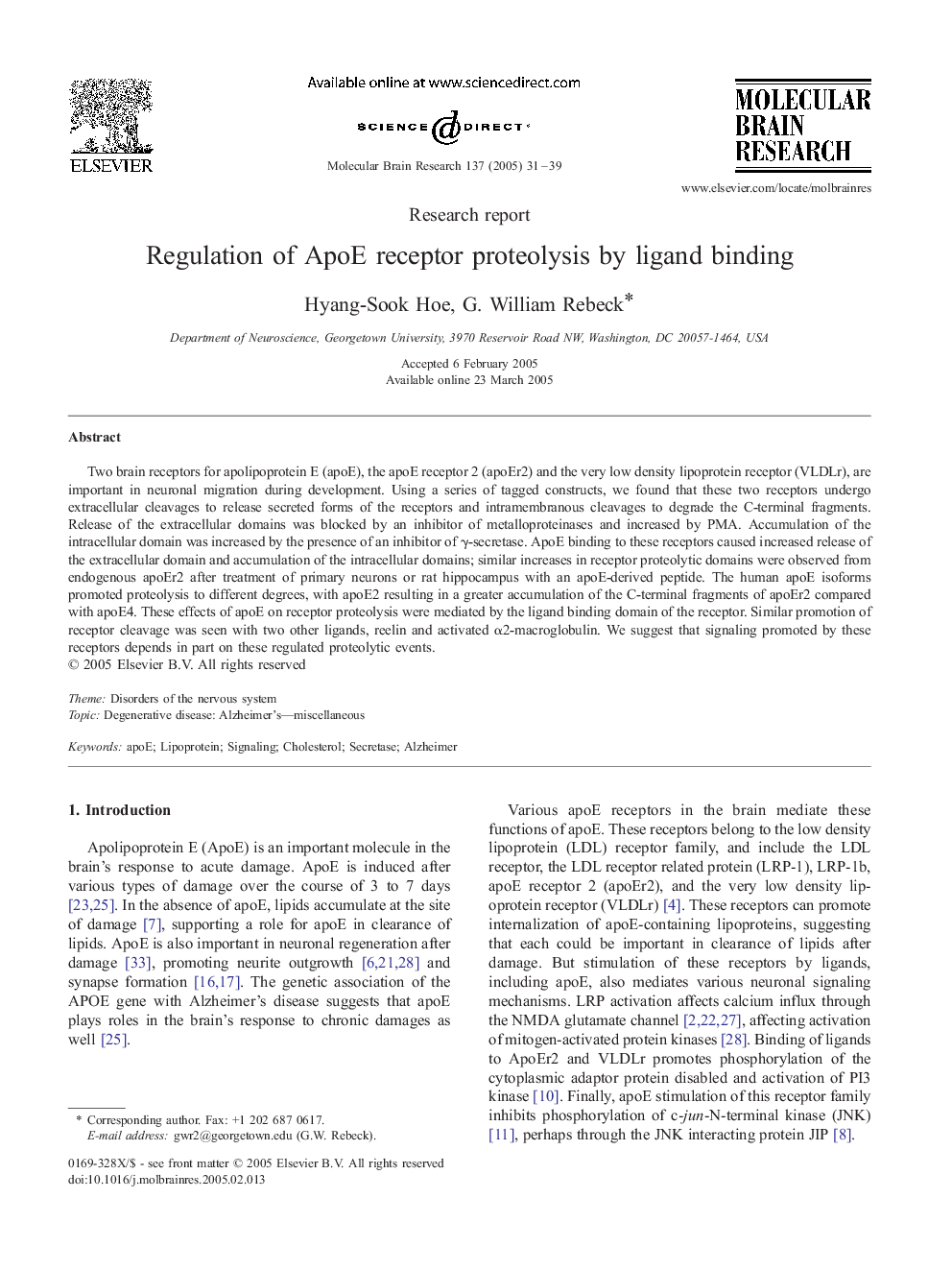| Article ID | Journal | Published Year | Pages | File Type |
|---|---|---|---|---|
| 9410756 | Molecular Brain Research | 2005 | 9 Pages |
Abstract
Two brain receptors for apolipoprotein E (apoE), the apoE receptor 2 (apoEr2) and the very low density lipoprotein receptor (VLDLr), are important in neuronal migration during development. Using a series of tagged constructs, we found that these two receptors undergo extracellular cleavages to release secreted forms of the receptors and intramembranous cleavages to degrade the C-terminal fragments. Release of the extracellular domains was blocked by an inhibitor of metalloproteinases and increased by PMA. Accumulation of the intracellular domain was increased by the presence of an inhibitor of γ-secretase. ApoE binding to these receptors caused increased release of the extracellular domain and accumulation of the intracellular domains; similar increases in receptor proteolytic domains were observed from endogenous apoEr2 after treatment of primary neurons or rat hippocampus with an apoE-derived peptide. The human apoE isoforms promoted proteolysis to different degrees, with apoE2 resulting in a greater accumulation of the C-terminal fragments of apoEr2 compared with apoE4. These effects of apoE on receptor proteolysis were mediated by the ligand binding domain of the receptor. Similar promotion of receptor cleavage was seen with two other ligands, reelin and activated α2-macroglobulin. We suggest that signaling promoted by these receptors depends in part on these regulated proteolytic events.
Keywords
Related Topics
Life Sciences
Neuroscience
Cellular and Molecular Neuroscience
Authors
Hyang-Sook Hoe, G. William Rebeck,
